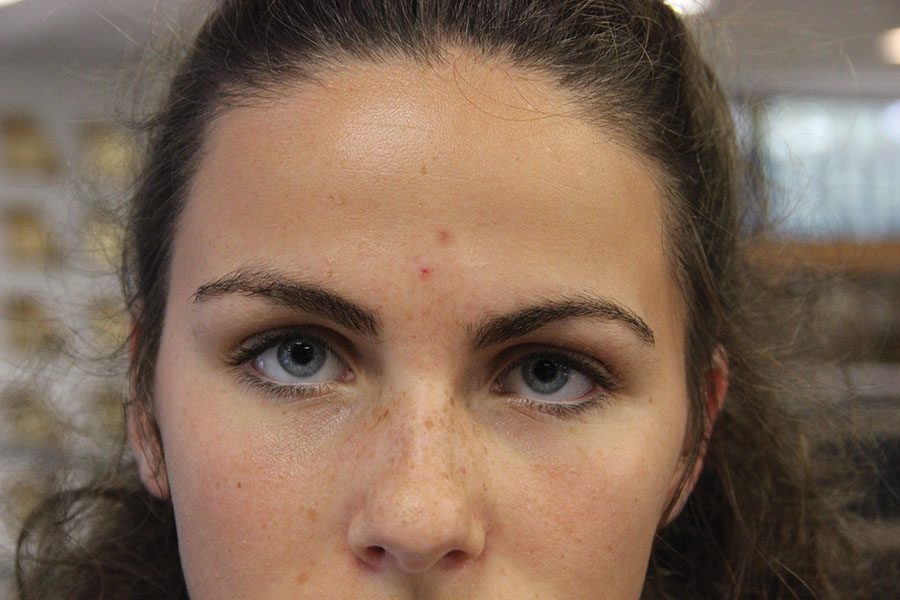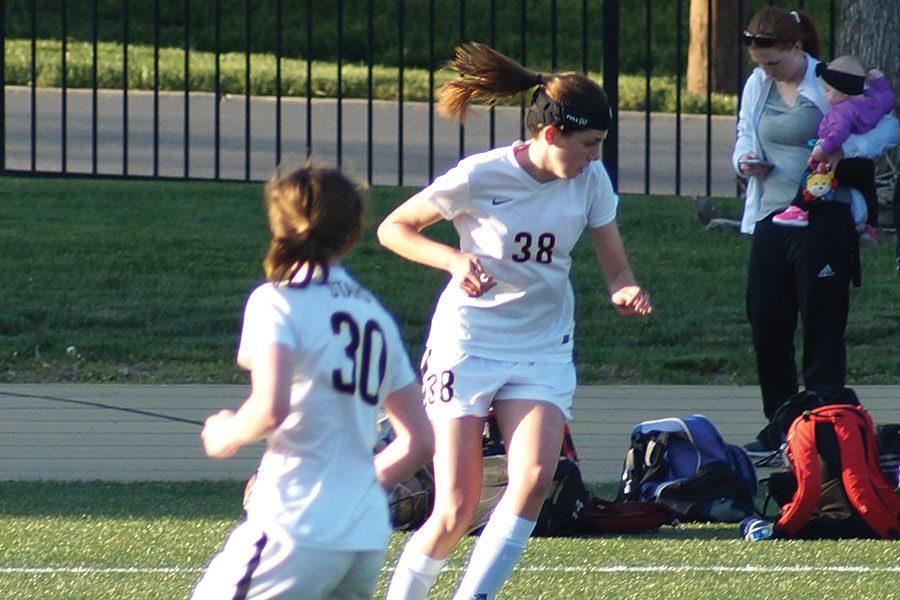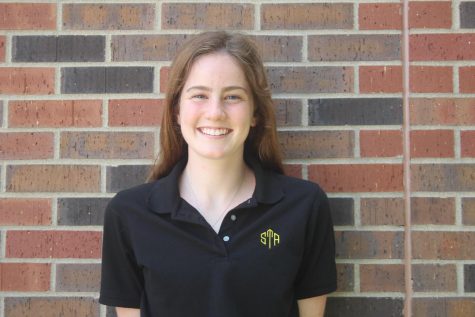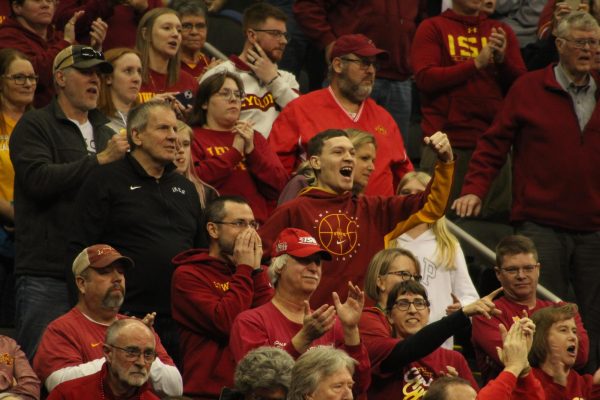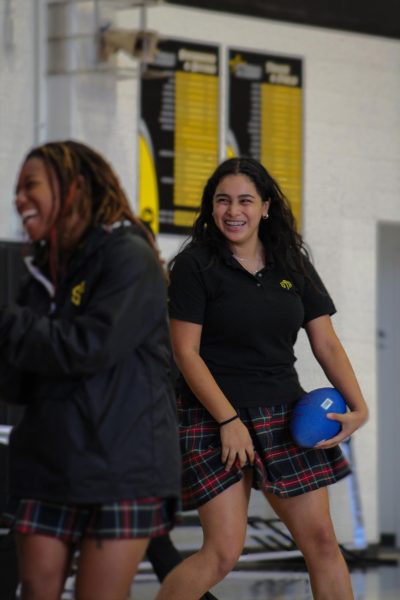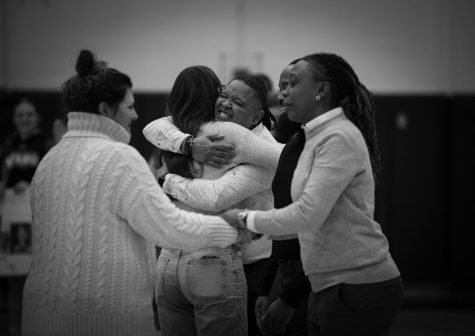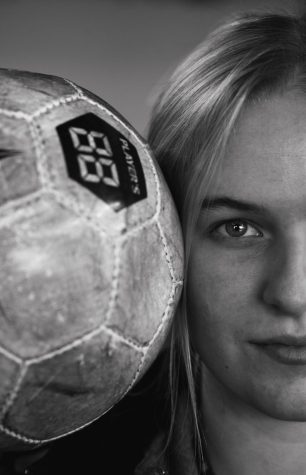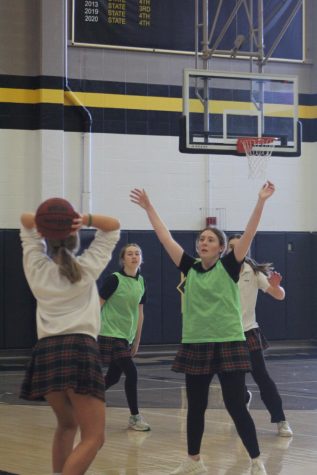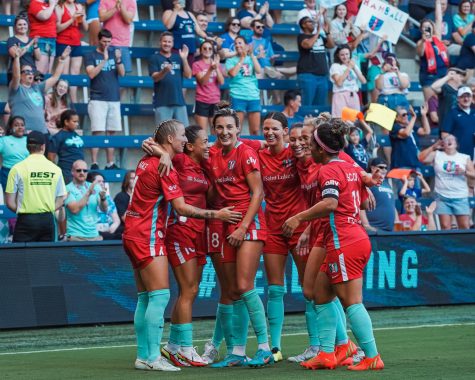The impact of head injuries
In the aftermath of the last ten years of research by the NFL, is the hype around concussions appropriate?
Sophomore Kate Coppinger suffered a major concussion her eighth grade year during a lacrosse game. She still plays year round and for STA in the spring. photo by Anna Louise Sih
November 20, 2016
story by Gabby Staker
Midway through the fall of her eighth grade year, sophomore Kate Coppinger missed 85 days of school. She saw six different doctors. She suffered horrible headaches and debilitating migraines. She wore a pair of purple sunglasses for the rest of that year and she sat in the front hallway of her school during every single lunch period.
Coppinger had suffered a concussion Oct. 19, 2014, and she wouldn’t step onto the lacrosse field again until nine months of physical therapy and neurosurgery consultations proved her brain could handle another game.
Coppinger was playing for the championship at a lacrosse tournament in St. Louis when she was checked by a girl on the other team. Hard. Twice. The first hit rattled Coppinger, but she kept playing– she wanted to win. Getting up a second time, though, was much harder.
“She pushes me down again and this time I fall and hit the back of my head,” Coppinger said. “I’m choking on my mouthguard and I can’t breathe… Those two hits, when I fell, they were all within a minute. Everything kept happening really quickly.”
After crawling to the sideline, Coppinger was told by trainers that she might have sustained a concussion. “My fingers would do this,” and she twitches her fingers, “my legs would do this,” and her legs tremor slightly, “and I couldn’t control it,” she remembers.
According to STA athletic trainer Lisa Gross, a necessary conversation about concussions began approximately ten years ago with an increasing number of NFL players who were suffering from neurocognitive issues.
In December of 2012, Kansas City Chiefs linebacker Jovan Belcher fired ten fatal shots at his girlfriend, Kasandra Perkins, before taking his own life at the Chiefs’ practice facility in front of general manager Scott Pioli and coaches Romeo Crennel and Gary Gibbs.
“They couldn’t take care of themselves,” Gross said. “There were murder-suicides of certain players. That’s when somebody kind of stopped and said, ‘Why are these football players– what is causing this kind of mental breakdown?’”
But while the spotlight initially shone on football, it’s expanding. Gross believes that while the word “concussion” connotes football, concussion rates are similarly as high in basketball, soccer, and lacrosse.
“It was good to where the spotlight needed to happen, but I think we’ve evolved from concussions being a horrible, fear-inducing word to recognizing that they happen, there’s only so much you can do it certain situations to avoid collisions,” Gross said. “You can’t always override inertia. Sometimes physics are just against you.”
photos by Anna Louise Sih
Rockhurst High School head football coach Tony Severino has coached for 47 years. He has no doubt that in those 47 years, the attitude towards concussions has changed significantly. “The awareness of it now is terrific, but you can’t be scared,” Severino said.
No matter the sport, Severino sees value in playing high school sports, “lessons that far outweigh the risk of anything,” he said. “There’s risk in driving. There’s risk in walking down the street, and you’re not going to stop doing that… I’d hate to see them giving up on the experiences of playing while they’re able to play sports in high school.”
For the past six years, Gross has administered concussion baseline tests, a “a tool in a toolbox” for detecting sport-induced concussions. The online tests activate all lobes of the brain to “establish a baseline of their current cognitive performance, which is a measure of processing speed, working memory, attention and accuracy,” Gross said. “Repeating the same tests after injury identifies any cognitive changes from the baseline test performance. This helps indicate whether the brain has fully recovered.”
Gross worked with the STA administration over the summer to implement a program to treat all concussed students, not just in-season athletes. Gross cites the case of a concussion suffered in a car accident. She hopes that this new, more specialized policy will allow students to be able to take the appropriate time for at-home recovery without having unexcused absences and copious amounts of work to make up for in their classes.
“The thought of falling behind and making up that work can be extremely stressful,” Gross said. “That kind of stress will delay your healing.”
STA sophomore Francine Vaughn fell on a tumbling pass during practice Sept. 12, sustaining a concussion– the first in her gym in thirty years. Vaughn missed three days of school and couldn’t practice for another seven days after her headaches stopped.
Although she was emailed by STA counselor Kelly McKee, who asked if she needed extensions for her classes, Vaughn admits she felt some pressure from teachers to turn in assignments as quickly as possible after she returned to school.
Overall, Gross believes that if concussions are addressed and treated prudently, most players can make a full recovery. It’s when players hide their symptoms and check back into the games that microtraumas accumulate and long-term consequences occur.
Coppinger was cleared July 1, 2015, after doctors had initially told her she might never play contact sports again. She went on to play Junior Varsity lacrosse during the regular season and postseason Varsity as a freshman, although she feels like she reached peak performance before her concussion. She recalls the physical degradation of her body during her recovery.
“Walking up five steps, my heart rate [went] crazy,” Coppinger said. “It’s because I was in my bed, not doing anything for nine months… Ever since that, I’ve never been as good of a player as I was. That’s been a big bump in the road. I don’t think I’ll ever be as fast as I was.”



